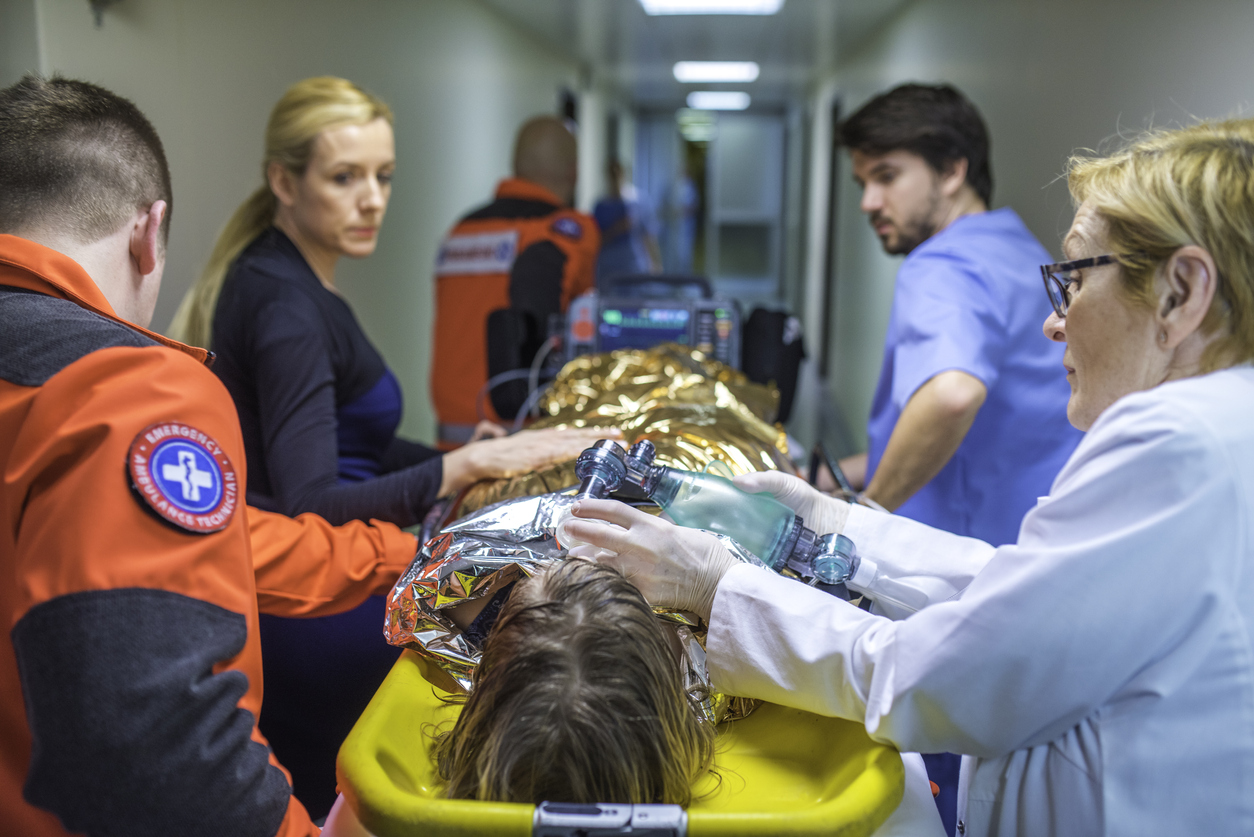
How EMS workers react to hypothermia in patients can determine whether a patient lives or dies and it is critical they understand protocol. Likewise, hyperthermia is a condition characterized by body temperatures higher than 40° C. It can come from many conditions. These conditions include sepsis, withdrawal, or the ingestion of a toxic substance. Because of these possible causes, treatments targeting specific diseases should receive the utmost attention. EMS personnel should always focus on resuscitation and airway and circulation management as a top priority. Moreover, the speed at which they react to hypothermia in patients can save a life. Accident and Health Insurance (A&H) can help a patient that suffers an accident.
Equipment and Personnel for Treating Hyperthermia
EMS personnel typically use the following equipment when treating hyperthermic patients: cold saline solutions, ice packs, sheets, and towels.
Apart from this standard equipment, they may also utilize cooling blankets, spray bottles, fans, and pools. EMS can use inflatable children’s pools for emergency cases in cases.
A single EMS worker can perform all the methods used for treating patients with hyperthermia. However, having additional personnel makes it possible to perform other procedures simultaneously. It will make it faster to cool down the patient, which is crucial in emergencies.
Preparing Patients for Treatment
EMS personnel should first take their vital signs. Then, they should ensure nothing is blocking their airways when treating hyperthermia patients. Then, they can initiate cooling procedures.
The patient needs total exposure to facilitate treatment. It will also help ensure easy access to the intravenous procedure.
Treatment Procedures and Methods
The following are the treatment methods employed for patients with hyperthermia. Also, EMS officials can perform other interventions depending on specific circumstances and the patient’s condition.
Application of Cold Water to the Skin
It is typically done continuously, usually with a sponge or spray bottle. It can help relieve some issues that may appear later.
Blowing a Fan on the Patient
Most interventions involve placing a fan next to the patient to blow cool air directly on them. It is usually done simultaneously with spraying or sponging water. These methods combined helped speed up the rate of evaporation. Also, it caused the patient’s body temperature to decrease much more quickly.
Wrapping the Patient in a Damp Sheet
In some cases, EMS personnel may soak a sheet in cold water and wrap it around the patient after wringing it out. They can repeat this procedure if the sheet is no longer cool.
Ice Pack Application
Some procedures involve applying ice packs directly to the patient’s skin. It tends to be more effective when applied to specific body parts such as the groin, neck, and torso.
Cold Saline Infusion
The cold saline infusion might work. EMS will implement this, depending on the patient’s condition. However, EMS personnel will have to monitor the patient closely and cease the application if they see them shivering. In most cases, applying ice packs and reapplying cold water is the preferred method of ensuring rapid cooling.
Ice Water Immersion
Put the patient in ice if there is ice water nearby. Fill the pool with water and ice first. Then, immerse the patient with the water covering the torso to the groin area. EMS should ensure that the patient submerges the extremities.
It is essential to periodically check the patient’s vital signs and observe their mental state. EMS workers will have to remove the patient from the pool when the water temperature reaches 40°C.
Applying water and ice to the patient is usually an effective strategy. However, it is generally necessary to reapply water and ice repeatedly as they often dry up and melt depending on the patient’s temperature and environmental conditions.
The best way to react to hypothermia in patients is to follow the steps. Likewise, EMS workers must act vigilantly to ensure the best care for for their patients.
About Provident Insurance Programs
With roots dating back to 1902, Provident Insurance Programs is a program administrator that serves paid and volunteer firefighters in addition to emergency medical responders with numerous custom-tailored insurance programs. We’ve also extended our expertise and experience to offer benefit plans and coverages to participant groups as well as Transportation Benefits. We are committed to continuing to provide superior customer service, and would be happy to speak with you to provide further information. Give us a call today at (855) 201-8880 to speak with one of our representatives.


